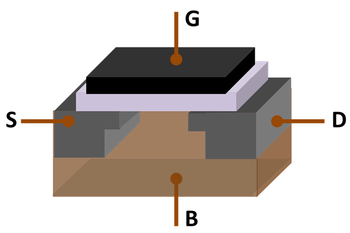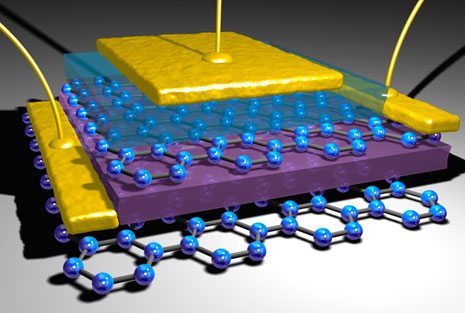When an electric field is applied to a (CNTFET nanotransistor), the carbon nanotube between the source and the drain contains a moving charge (PhD in nano-microelectronics).
Researcher and author: Dr. ( Afshin Rashid)
Note: Lack of precise control over the positioning of CNTs when making CNFETs causes irregularities in nanotubes, less than half a percent of nanotubes made on a single diamond crystal substrate are irregular.
Irregular nanotubes may cause a short circuit between the output and the feed. The connection between carbon and metal nanotubes used to connect the source and drain forms a Schottky barrier (SB) in a CNTFET. The formation of Schottky dams in the source and drain sections of a transistor causes a significant reduction in the input current in this transistor. Therefore, for the higher operational efficiency of CNFET components, suitable metals are needed that can be used at the junction of the sur and drain and create an ohmic connection .
When an electric field is applied to a CNTFET nanotransistor, the carbon nanotube between the source and the drain contains the moving charge. The density of these charges is for the source, and this density is determined by the probability of the Dirac form distribution. The ability of carbon nanotubes to be used in gas sensors is due to their hollow and high contact surface. This contact surface consists of the outer wall of the nanotube and its empty middle parts. Physico-chemical adsorption of gases in nanotubes changes their conduction. Due to the reduction in the scale of semiconductor components and integrated circuits to the nanometer range, the semiconductor industry will face many challenges. Reducing the scale causes more short channel effects, less gate control, increase Exposure to leakage currents, severe process changes and power densities becomes unmanageable. CNTFET is an option for transistors in order to be able to continue to reduce dimensions and to develop new structures, carbon nanotube field effect transistors are one of the most important issues in nanotechnology carbon nanotubes.
Conclusion :
Lack of precise control over the positioning of CNTs when making CNFETs causes irregularities in nanotubes, less than half a percent of nanotubes made on a single diamond crystal substrate are irregular.




